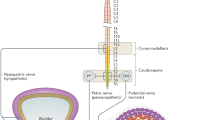Abstract
Vesicoureteral reflux and urinary incontinence have previously been treated by various means including the endoscopic delivery of injectable bulking materials such as silicone micro-implants, PTFE implants, glass particles, fat and bovine collagen. These first three materials do not degrade and collagen requires frequently repeated injections in order to sustain the restored continence provided. Vesicoureteric reflux in children usually resolves independently before the age of five. Correction is required before this, because treatment by prophylactic antibiotics is frequently unsuccessful in preventing breakthrough infection. The ideal material for injection should have large particles to avoid migration, inject easily and controllably, be non-toxic and dissolve over the period of time by which time the kidney will be mature. Three different controlled-release glass (CRG) granule compositions have been prepared by Giltech Ltd, and suspended in a suitable carrier medium (in this case glycerol). The degradable glasses, which have two different size ranges of 200–300 and <53 μm, and three different solution rates, were injected intramuscularly into the dorso-lumbar region of rats. Histological analysis of cryostat cut section after time periods of 2 d, 4 and 9 wk, and 6 mon has been performed. Histology sections were stained for neutrophils and macrophages using enzyme histochemistry. ED1 (monocytes and immature macrophages), ED2 (mature tissue macrophages), CD4 (helper/inducer T-lymphocytes and macrophages), CD8 (suppresser/cytotoxic T-lymphocytes), Interleukin-1β, IL-2 (activated T-lymphocytes), Major Histocompatibility Complex (MHC) class II (activated macrophages and activated B-lymphocytes), α–β (T-lymphocytes) and CD45RA (B lymphocytes) antibodies have beed used to stain immunohistochemically each sample. This study demonstrates that particulate, degrading glass is stimulating an inflammatory response in soft tissue at time periods up to 6 mon. It should be noted that very small particulate, fast degrading glass is leading to tissue necrosis and should not be considered further for these applications. However, larger particulate, slower degrading materials are demonstrating effective potential for stress incontinence applications. © 1998 Kluwer Academic Publishers
Similar content being viewed by others
References
C. F. Drake, Pest. Sci. 9 (1978) 441.
W. M. Allen, B. F. Sansom, C. F. Drake and D. C. Davies, Vet. Sci. Commun. 2 (1978) 73.
W. M. Allen, B. F. Sansom, P. T. Gleed, C. B. Mallinson and C. F. Drake, Vet. Record 115 (1984) 55.
W. M. Allen, B. F. Sansom, C. B. Mallinson, R. J. Stebbings and C. F. Drake, Vet. Record (1985) 175.
T. Gilchrist, D. M. Healy and C. F. Drake, Biomaterials 12 (1991) 76.
R. Sheriden, P. J. Doherty, T. Gilchrist and D. M. Healy, J. Mater. Sci. Mater. Med. 6 (1995) 853.
J. Burnie, T. Gilchrist, S. R. I. Duff, C. F. Drake, N. G. L. Harding and A. J. Malcolm, Biomaterials 2 (1981) 244.
J. Burnie and T. Gilchrist, Ceram. Surg. (1983) 169.
S. H. Cartmell, P. J. Doherty, N. P. Rhodes, J. A. Hunt, D. M. Healy and T. Gilchrist, J. Mater. Sci. Mater. Med. 9 (1998) 1.
B. D. Joyner and A. Atala, Urology 50 (1997) 489.
M. Cendron, D. P. Devore, R. Connolly, G. R. Sant, A. Ucci, R. Calahan and G. T. Klauber, J. Urol. 154 (1995) 808.
J. N. Kabalin, ibid. 152 (1994) 1463.
C. D. Mckinney, M. J. Gaffey and J. Y. Gillenwater, ibid. 153 (1995) 149.
A. Schedle, P. Samorapoompichit, W. Fureder, X. H. Rauschfan, A. Franz, W. R. Sperr, W. Sperr, R. Slavicek, W. Klepetko, A. Ellinger, M. Ghannadan, M. Baghestanian, P. Valent, J. Biomed. Sci. Res. 39 (1998) 560.
Author information
Authors and Affiliations
Rights and permissions
About this article
Cite this article
Cartmell, S.H., Doherty, P.J., Hunt, J.A. et al. Soft tissue response to glycerol-suspended controlled-release glass particulate. Journal of Materials Science: Materials in Medicine 9, 773–777 (1998). https://doi.org/10.1023/A:1008923523428
Issue Date:
DOI: https://doi.org/10.1023/A:1008923523428




